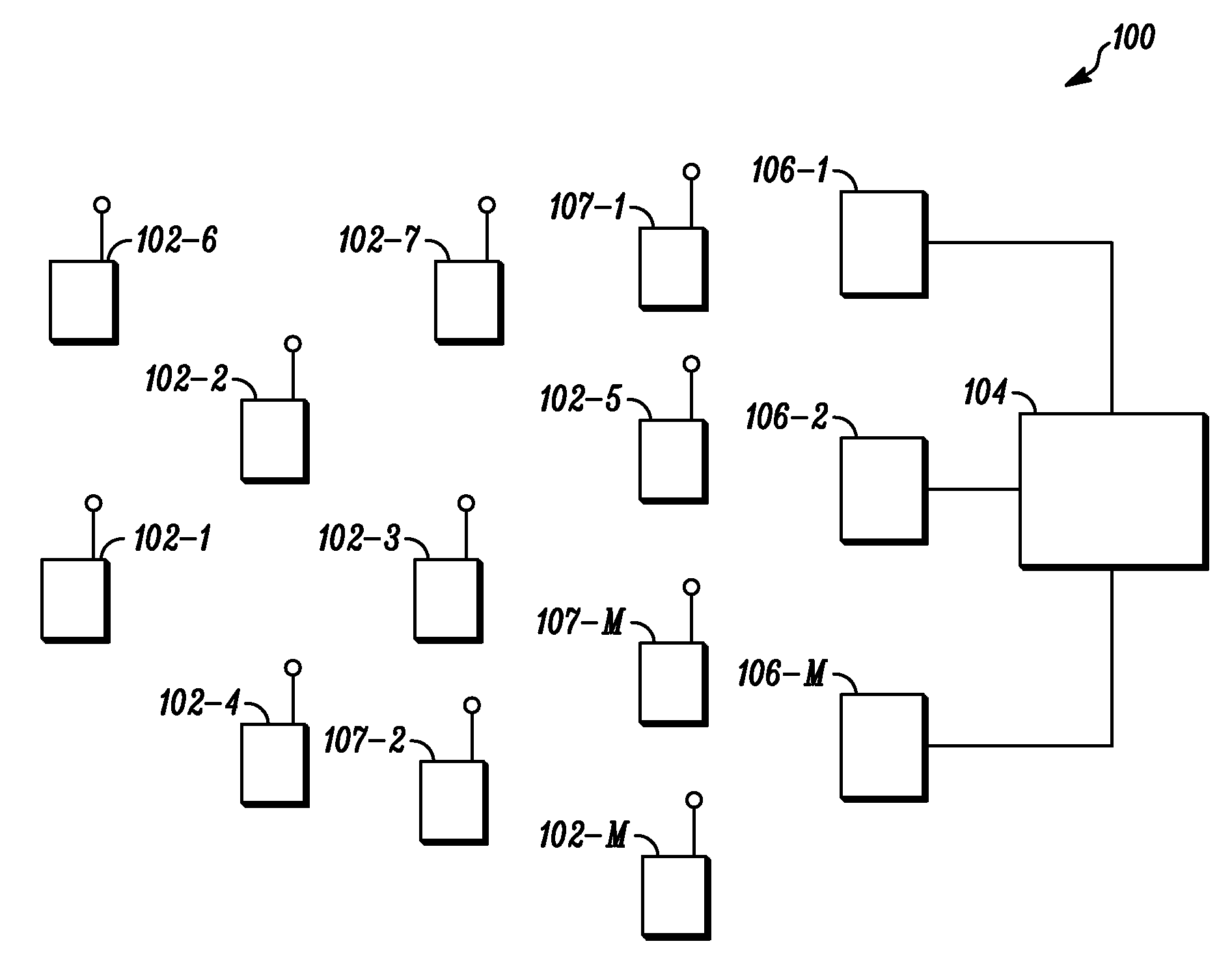System and method for performing code and frequency channel selection for combined CDMA/FDMA spread spectrum communication systems
a technology of spread spectrum communication system and code, which is applied in the field of system and method for performing code and frequency channel selection for combined cdma/fdma spread spectrum communication system, can solve the problems of code-planning technique only minimizing interference from other units, unable to transmit, and not taking advantage of the intrinsic properties of spreading codes, etc., to maximize channel utilization, minimize multiple access interference, and efficiently allocate codes and frequencies
- Summary
- Abstract
- Description
- Claims
- Application Information
AI Technical Summary
Benefits of technology
Problems solved by technology
Method used
Image
Examples
Embodiment Construction
[0029]FIG. 3 is a block diagram illustrating an example of an ad-hoc packet-switched wireless communications network 100 employing an embodiment of the present invention. Specifically, the network 100 includes a plurality of mobile wireless user terminals 102-1 through 102-n (referred to generally as nodes or mobile nodes 102), and a fixed network 104 having a plurality of access points 106-1, 106-2, . . . , 106-n (referred to generally as nodes 106 or access points 106), for providing the nodes 102 with access to the fixed network 104. The fixed network 104 includes, for example, a core local access network (LAN), and a plurality of servers and gateway routers, to thus provide the nodes 102 with access to other networks, such as the public switched telephone network (PSTN) and the Internet. The network 100 further includes a plurality of fixed routers 107-1 through 107-1 (referred to generally as nodes 107) that are capable of routing data packets to other nodes 102, 106 or 107.
[00...
PUM
 Login to View More
Login to View More Abstract
Description
Claims
Application Information
 Login to View More
Login to View More - R&D
- Intellectual Property
- Life Sciences
- Materials
- Tech Scout
- Unparalleled Data Quality
- Higher Quality Content
- 60% Fewer Hallucinations
Browse by: Latest US Patents, China's latest patents, Technical Efficacy Thesaurus, Application Domain, Technology Topic, Popular Technical Reports.
© 2025 PatSnap. All rights reserved.Legal|Privacy policy|Modern Slavery Act Transparency Statement|Sitemap|About US| Contact US: help@patsnap.com



